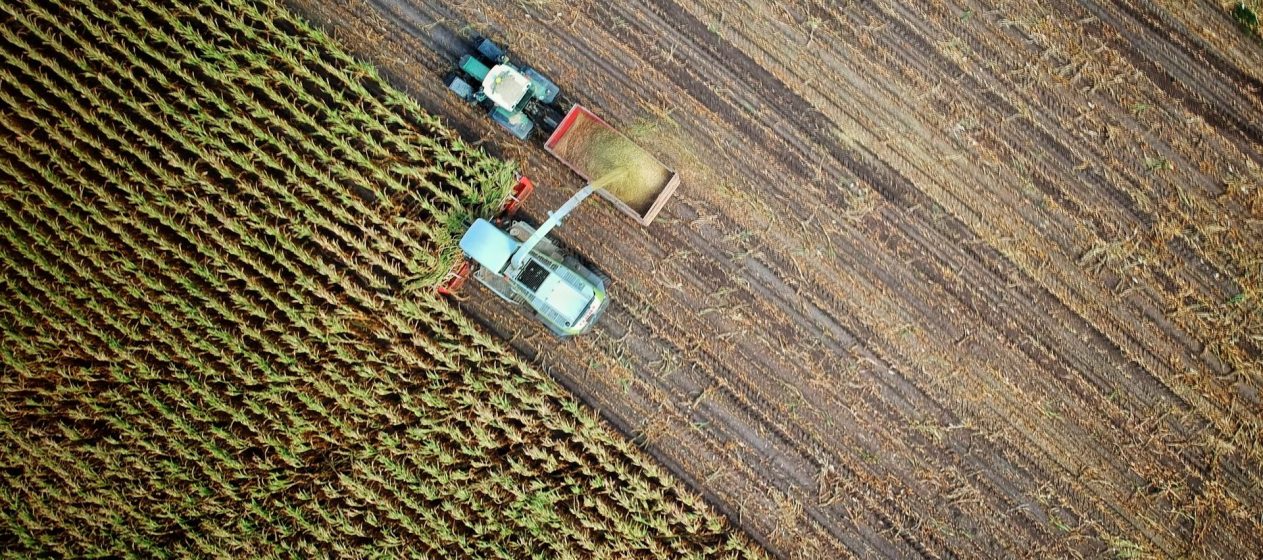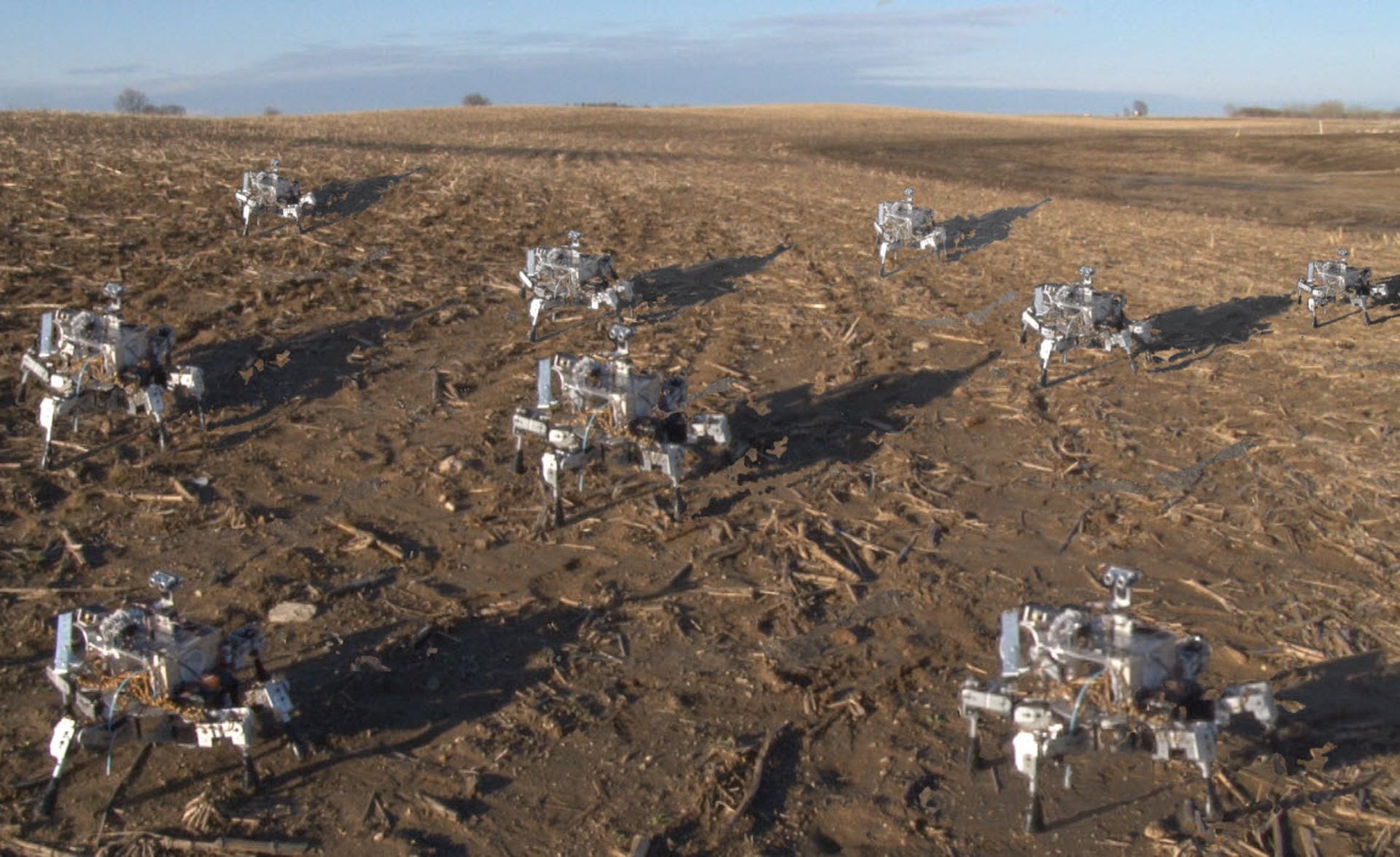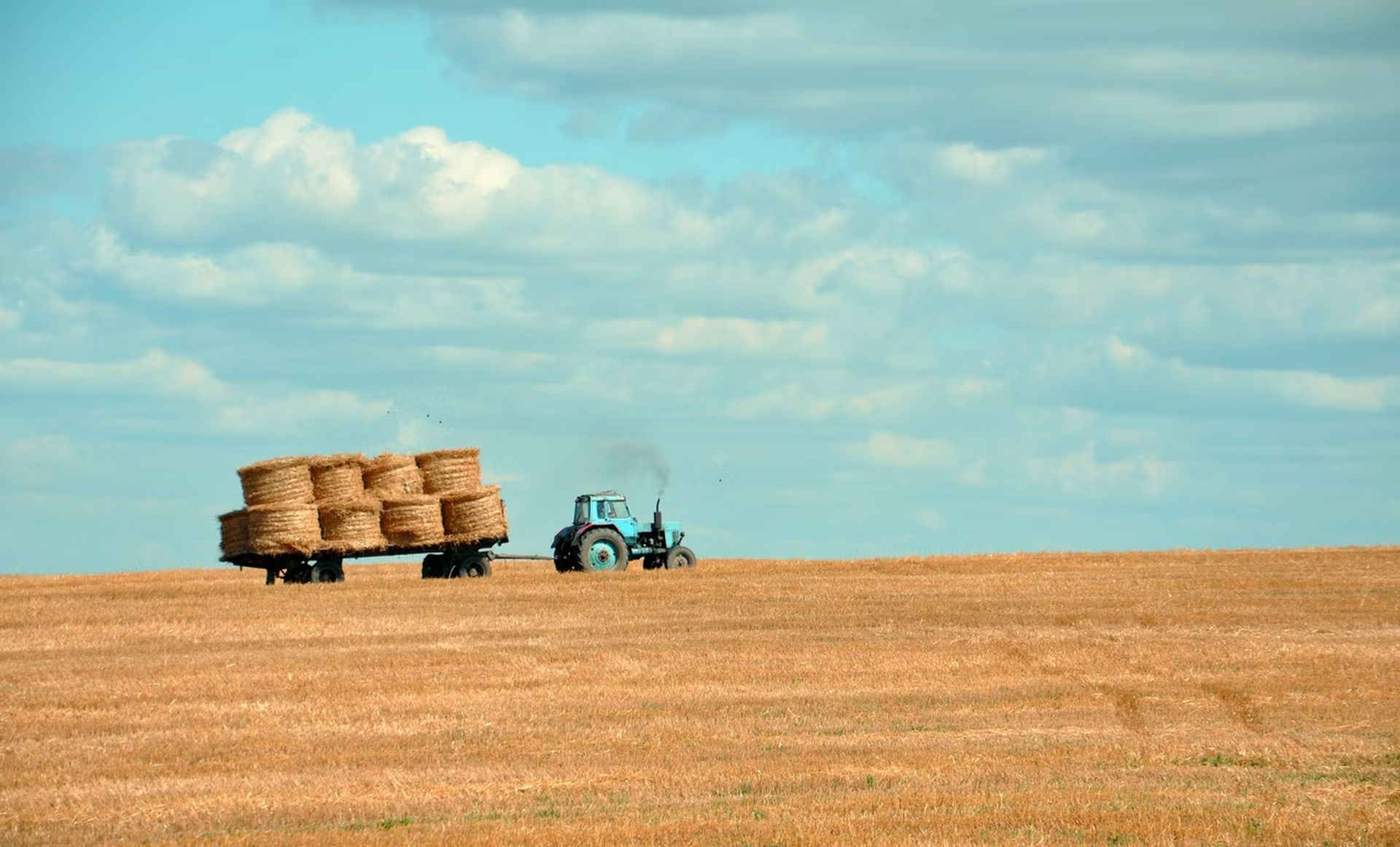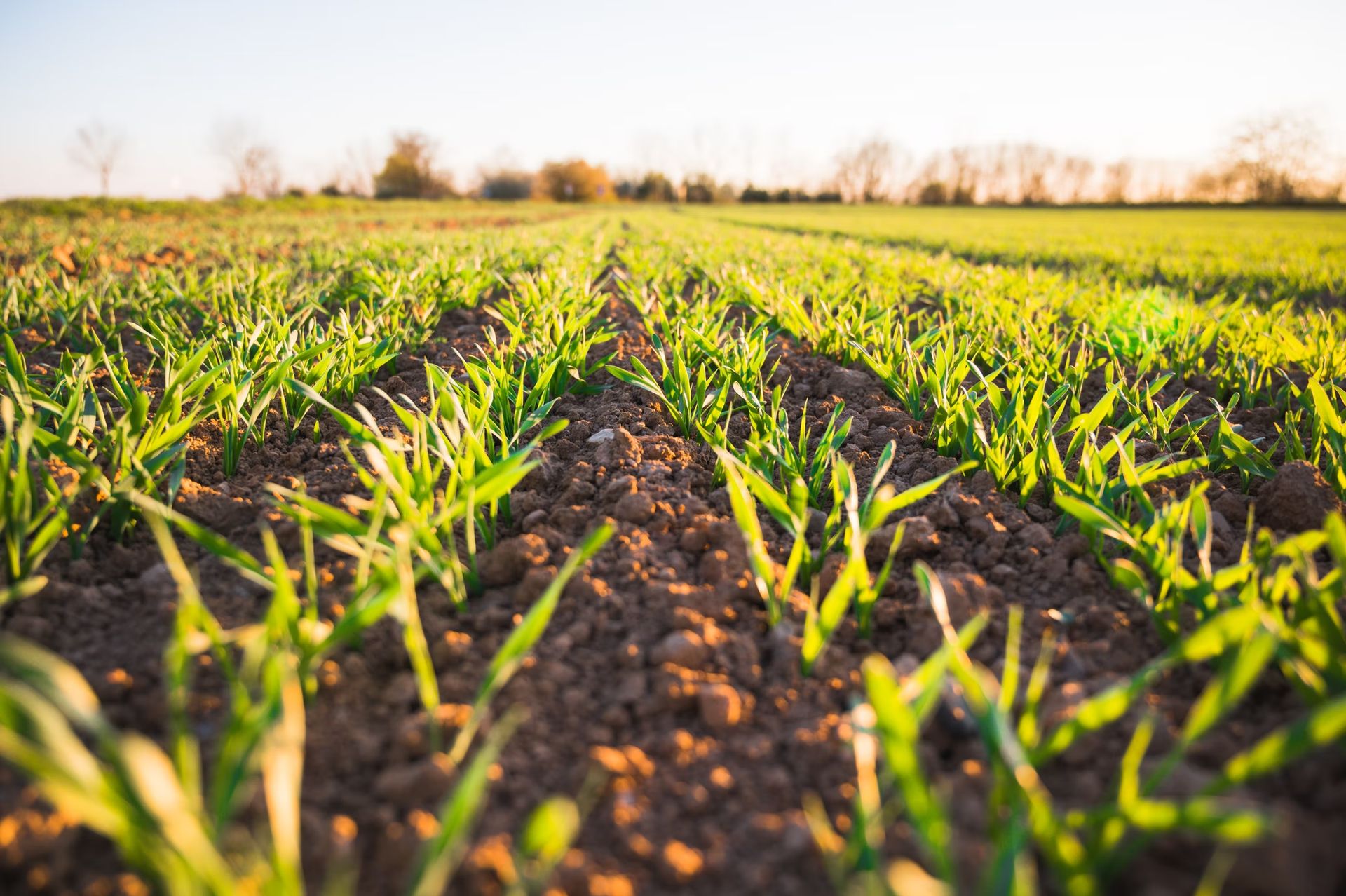摘要: AI in agriculture aids in the detection of pests, plant diseases, and undernutrition in farms. Artificial intelligence sensors can identify and target weeds before deciding which herbicide to use in the area. Precision agriculture, often known as artificial intelligence systems, is assisting in enhancing the overall quality and accuracy of harvests.

▲圖片來源:dataconomy
AI in agriculture aids in the detection of pests, plant diseases, and undernutrition in farms. Artificial intelligence sensors can identify and target weeds before deciding which herbicide to use in the area. Precision agriculture, often known as artificial intelligence systems, is assisting in enhancing the overall quality and accuracy of harvests.
THE ROLE OF COMPUTER VISION
You need a lot of land to feed billions of people. These days, hand cultivation is not possible. At the same time, crop failures are frequently caused by pest infestations and plant diseases. Such invasions are challenging to spot and stop in the bud given the magnitude of modern agriculture operations.
This adds a new application for computer vision techniques. Aerial photography is used by growers to identify early indicators of plant disease or pests at the macro level and close-up photographs of leaves and plants at the micro level to identify crop illnesses. The common method for computer vision used in these studies is convolutional neural networks.

▲圖片來源:dataconomy
There are now many more applications for AI in agriculture being developed.
Please take note that we are using the term “computer vision” quite broadly here. Images are frequently not the most reliable sources of information. The greatest method to study many significant aspects of plant life is in other ways. It is frequently possible to gather hyperspectral images with specialized sensors or carry out 3D laser scanning to better understand plant health. In agronomy, such techniques are increasingly applied thanks to AI in agriculture.
Typically having a high resolution, this data type is more comparable to medical imaging than photos. AgMRI is the name of one of the field monitoring systems. Although specialized models are required to process this data, convolutional neural networks in particular can be used because of the spatial organization of the data.
Research on plant phenotyping and imaging is receiving millions of dollars. The primary task at hand is to gather sizable data sets on crops (often in the form of pictures or three-dimensional images) and contrast phenotypic information with plant genotype. The findings and information can be applied to advance global agriculture technologies. Agriculture is not the only sector to utilize smart artificial intelligence systems, AI in recruitment is also a hot topic. Did you know that Google Interview Warmup is assisting job seekers?
HOW ROBOTS ARE BEING UTILIZED IN AGRICULTURE?
Prospero and other autonomous agricultural robots have the ability to dig holes in the ground and plant seeds while adhering to established basic patterns and taking into account the unique features of the area. Robots are also capable of managing the growing process and interacting with each plant separately. Robots will harvest when the moment is perfect, once again treating each plant exactly as it should.
Swarm farming is the foundation of Prospero. Imagine a horde of little Prosperos crawling over the crops, leaving behind tidy, even rows of vegetation. It’s interesting to note that Prospero first surfaced in 2011, before the present deep learning revolution reached its pinnacle. Today, you may automate an increasing number of ordinary operations in agriculture thanks to the swiftly spreading use of robots.

▲Prospero and other autonomous robots are important instruments for AI in agriculture.(來源:dataconomy)
Drones with automation spray crops. Drones that are small and agile can deliver dangerous substances more precisely than larger aircraft. In addition, aerial photography taken with sprayer drones can be utilized to collect data for the computer vision algorithms stated at the beginning of this article.
Robots designed specifically for harvesting are being created and deployed more and more. Combine harvesters have long been in use. Still, it has only recently been able to create, for instance, a robot that selects strawberries thanks to advances in computer vision and robotics.
Individual weeds can be recognized and mechanically removed by robots like Hortibot. This is another another fantastic achievement of contemporary robotics and computer vision, as it was previously impossible to discriminate between weeds and beneficial plants and employ manipulators to interact with little plants.

▲AI in agriculture improves efficiency.(來源:dataconomy)
It is already evident that ML, AI, and robotics can function well in agriculture even though many agricultural robots are still prototypes or are only being tested on a small scale. It is safe to assume that in the near future, an increasing amount of agricultural activity will be mechanized.
There are now many more applications for AI in agriculture being developed. For instance, a Neuromation pilot project applies computer vision to the animal husbandry sector, a field that has not yet drawn significant interest from the deep learning community.
MACHINE LEARNING AND AI IN AGRICULTURE
Of course, there have been initiatives to leverage livestock tracking data for machine learning. For instance, the Pakistani business Cowlar debuted a collar with the snappy motto “FitBit for Cows” that wirelessly monitors the activity and temperature of cows. French researchers are working on facial recognition technology for cows.
Additionally, there are initiatives to use AI in agriculture in pig farming, a hitherto underutilized sector with a market value of hundreds of billions of dollars. Pigs are housed in relatively tiny groups on modern farms, where the most comparable animals are chosen. Food is the primary expense in pig production, hence the major goal of contemporary pig production is to maximize the fattening process.

▲圖片來源:dataconomy
There are initiatives to use AI in agriculture in pig farming.
If the farmers had comprehensive knowledge of the pigs’ weight gain, they could be able to resolve this issue. Animals are often only weighed twice throughout their entire lives: at the start and the end of fattening. Experts could design a unique fattening regimen for each pig and even a unique mix of food additives if they knew how each piglet is gaining weight. This would greatly increase the production.
Although driving animals onto scales is not particularly difficult, it causes them a great deal of stress, and stressed pigs lose weight. The new AI research intends to create a novel, non-intrusive approach to animal weighing. The weight of pigs will be inferred from the photo and video data by Neuromation using a computer vision model. These estimates will be incorporated into the existing traditional, analytical machine learning models to enhance the process of fattening.
WHAT IS THE FUTURE FOR AI IN AGRICULTURE?
Agriculture and animal husbandry are sometimes viewed as outdated professions. Today, however, AI in agriculture is becoming a common instrument for many farms.
The primary cause of this is that there are numerous tasks in agriculture going on at once.
They are so complex that deep learning and contemporary artificial intelligence must be used in order to automate them. Although identical to one another, cultivated plants and pigs did not come off the same assembly line. Each tomato bush and each pig requires a unique method, thus up until very recently, human intervention was absolutely necessary.

▲圖片來源:dataconomy
What is the future for AI in agriculture?
We can solve challenges using current developments in artificial intelligence while also automating the technologies for interacting with plants and animals and taking into consideration their unique characteristics. Weighing a pig is simpler than learning how to pass the Turing test, and operating a tractor in a wide field is simpler than operating a car in heavy traffic.
Due to the fact that agriculture is still one of the world’s largest and most significant businesses, even a small improvement in efficiency will result in significant gains. That is why there are a lot of companies that are prioritizing AI in agriculture. We have also discussed AI in manufacturing, You can learn more about the future of Industry 4.0, by visiting our article.
轉貼自: dataconomy
若喜歡本文,請關注我們的臉書 Please Like our Facebook Page: Big Data In Finance


留下你的回應
以訪客張貼回應